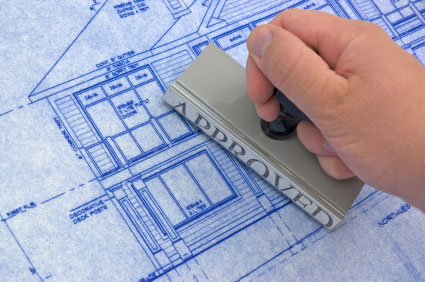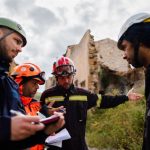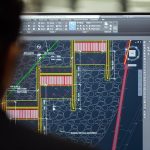A professional engineer who seals drawings, reports, or papers for a project is the Engineer of Record or EoR. The seal signifies that an EoR developed, coordinated, or prepared drawings, reports, etc., for a project under the supervision of a professional engineer. Ultimately, the EOR for construction projects assumes professional responsibility for ensuring the building’s structural integrity.
In this article, learn important answers to other commonly asked questions about engineers as it pertains to records and reports.

Do You Need an Engineer of Record?

First, is an EOR for a project required? It depends. Basic fabrication projects with proven designs that do not affect public welfare, likely do not require an EOR. More extensive building projects that affect public welfare will likely require the review of an engineer of record.
Oftentimes, the application of local building codes, customer specifications, the oversight of 3rd party inspectors, and rigorous quality requirement negates the need for an EOR. However, complex projects that involve multiple trades, and affect public welfare may have an EOR requirement as part of the project plan.
Tips to Choose the Right Engineer on Record
An engineer of record must have a professional license to practice engineering in the state where they offer their services. Colloquially, this is known as “having a stamp in XY State.” Verify these qualifications before embarking on a project. The likelihood of an EoR faking their credentials is very low as such an action would trigger criminal prosecution.

Sometimes an engineer of record is called upon to transform the conceptual ideas and project objectives into a scope of work or project proposal. At other times, an engineer of record may simply be required to perform calculations, beam sizing, or other project work. Frequently, the EoR simply stamps pre-existing drawings and validates a design.
When selecting an EOR, look at their domain expertise. A P.E. stamp alone does not sufficiently demonstrate that an engineer has the technical knowledge to analyze a given structure or processing facility. For example, some professional engineers may have extensive experience with fatigue failure, yet lack basic exposure to structural skid design.
Change of Engineer Record Letter
At times, the EoR requires a change. This may have to do with a resignation, change in project plans, or (hopefully not!) competence issues.
When changing the engineer of record, an affidavit shall be prepared.
It must contain the following statements and information
A. Complete Project Information
- Project Title
- Owner of Project/Company
- Location
B. First, state, that (new engineer’s full name and PRC license no.) is taking over the professional responsibility of the original designer (complete name of original engineer and PRC license no.) for the reason that (state reason why original engineer is unable to sign)
C. That, I (new engineer) have checked and reviewed the design made by (original engineer), conducted a thorough inspection of all installation and construction works, and based on my professional competence, I am taking full responsibility for the design and completion of the project mentioned above.
D. The new engineer must affix his signature, dry seal.
E. Next, the new engineer must attach a copy of the PRC license and PTR.
F. The affidavit must be notarized.
G. Also, the original and two copies require a control document submittal.
Liability of an Engineer of Record
As stated, the Engineer of Record assumes responsibility for the technical aspects of the project or a specifically agreed portion of the project that the EoR agrees contractually to undertake.
In assuming responsible charge, the EoR must, to the best of their ability:
- Make safe and ecologically responsible design, construction, and operating decisions that meet the design intent and are appropriate for the conditions.
- Be completely in command of, and happy with, its job, including its service, and has the authority to review, reject or accept it.
- Exercise a degree of control and supervision to accept full responsibility for its work and service.
- Answer questions relevant to the design, construction, and operation adequately, with such answers being in sufficient detail to demonstrate a reasonable knowledge of and proficiency of the design, construction, and operation.
- Lastly, have personal knowledge of the technical abilities of its personnel doing the work and satisfaction that the technical credentials of such personnel suit for the performance of the work, are per applicable laws, and are consistent with industry standards.

Also, the EoR should request continuity of this responsibility into the post-closure phase, including the closure design and construction supervision.
What is a Designer of Record?
The designer of record holds responsibility for stamping and sealing the design documents. The role also ensures compliance with all contract requirements and local codes. The Designer of Record typically establishes and oversees the Design Quality Assurance program. It also assists the Program Manager in completing the task order’s design and construction scope and is in charge of fulfilling important design milestones.
The Design of Record role usually pertains to an architectural project. Designers see heavy utilization on fabrication projects, but a formal role of “designer of record” does not typically exist.
Engineer’s Report
An engineering report is technical editing that displays, evaluates, and recommends solutions to an issue. It entails gathering and combining facts and ideas, running tests, and structuring the results into understandable outcomes for the reader
Operations that incur expected trouble may require an engineer’s report. Scenarios may include, but are not limited to: vibrating reciprocating compressors, pump cavitation, and hydrogen-induced cracking.



